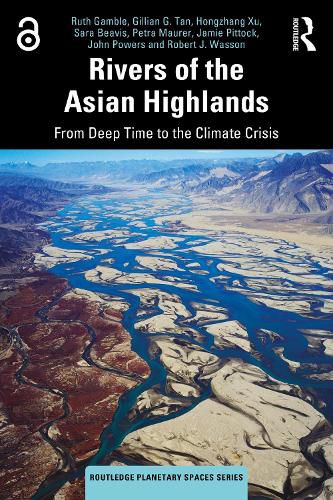Readings Newsletter
Become a Readings Member to make your shopping experience even easier.
Sign in or sign up for free!
You’re not far away from qualifying for FREE standard shipping within Australia
You’ve qualified for FREE standard shipping within Australia
The cart is loading…






Rivers of the Asian Highlands introduces readers to the intersecting headwaters of Asia's eight largest rivers, focusing on the upper reaches of two river systems: the Brahmaputra's highland tributaries in the eastern Himalayan Mountains and the Dri Chu (upper Yangzi), which descends from the Tibetan Plateau's east through the Hengduan Mountains.
This book guides its readers through these two rivers' physical, environmental, cultural, social, and political histories before providing a multifaceted assessment of their present. It uses general and detailed insights from multiple disciplines, including anthropology, conservation, geography, geomorphology, climate science, ecology, history, hydrology, and religious studies. The rivers' stories explain how the catchments' hazards-earthquakes, landslides, floods, droughts, and erosion-interact with their energetic, hydrological, ecological, cultural, and social abundance.
This book's multiple cultural and disciplinary perspectives on the rivers will interest anyone who wants to understand the rivers of this critically important region as the environment faces climate change and other ecological crises.
$9.00 standard shipping within Australia
FREE standard shipping within Australia for orders over $100.00
Express & International shipping calculated at checkout
Rivers of the Asian Highlands introduces readers to the intersecting headwaters of Asia's eight largest rivers, focusing on the upper reaches of two river systems: the Brahmaputra's highland tributaries in the eastern Himalayan Mountains and the Dri Chu (upper Yangzi), which descends from the Tibetan Plateau's east through the Hengduan Mountains.
This book guides its readers through these two rivers' physical, environmental, cultural, social, and political histories before providing a multifaceted assessment of their present. It uses general and detailed insights from multiple disciplines, including anthropology, conservation, geography, geomorphology, climate science, ecology, history, hydrology, and religious studies. The rivers' stories explain how the catchments' hazards-earthquakes, landslides, floods, droughts, and erosion-interact with their energetic, hydrological, ecological, cultural, and social abundance.
This book's multiple cultural and disciplinary perspectives on the rivers will interest anyone who wants to understand the rivers of this critically important region as the environment faces climate change and other ecological crises.